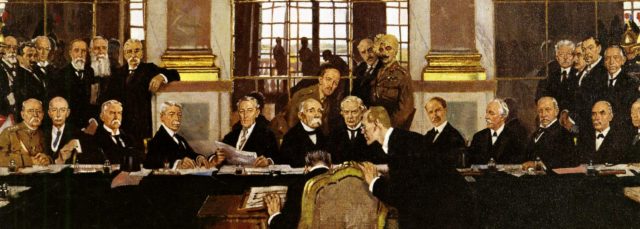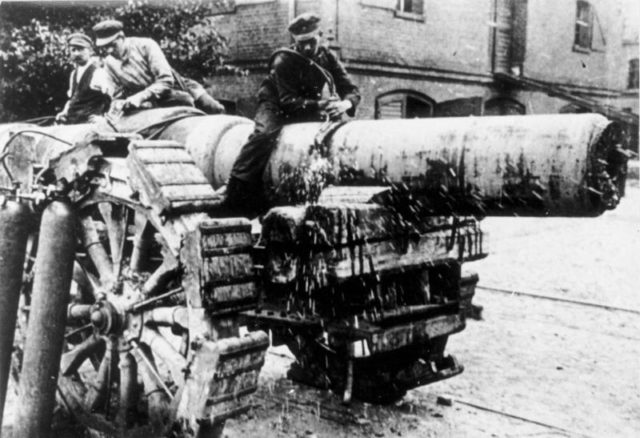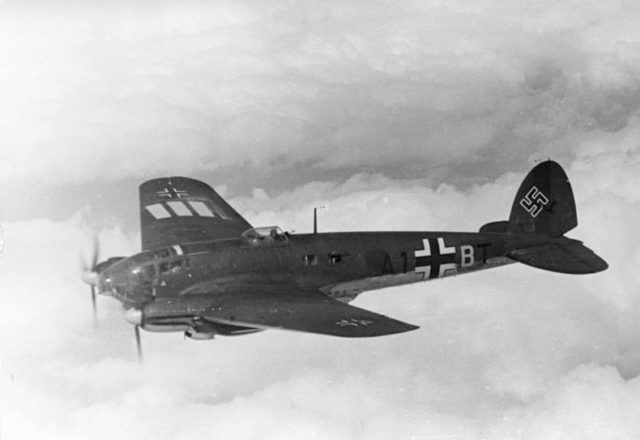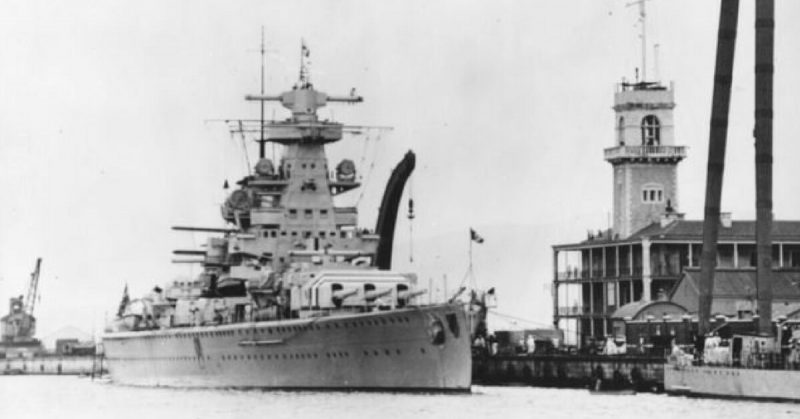Following WWI, the Treaty of Versailles was forced upon the defeated Germans by the victorious Allies. To prevent future German aggression, it set strict rules limiting the scale and capabilities of the German military.
During the 20 years that followed, the German military found ways to get around those restrictions.
Churning Through Recruits
One of the most important restrictions was in the number of men who could serve in the German military which would naturally limit Germany’s ability to wage war.
The Germans very quickly found an ingenious way to reduce the effect of that rule. They could not enlarge their active military beyond the confines set by the rules, but nothing was limiting how many men went through the military.
During that time most military careers were extremely short-lived. Soldiers, especially officers, were recruited, trained, and served just long enough to get a solid grasp on their work. Then they left the army, making space for more recruits.
The result was an enormous pool of trained soldiers and commanders who could be called up and made ready to fight at short notice. If an emergency arose and the country needed a much larger army, it was ready and waiting.
Limiting how many people could serve in the army ensured only the best were retained for longer careers. As a result, the quality of men in the German armed forces and the military culture were second to none.

The General Staff, or Not
One of the other significant restrictions set by the Versailles treaty was that the Germans were not allowed to have a general staff. They were responsible for administering, leading and theorizing for the army. Prussia, the powerful nation under whose leadership Germany was united, had played the greatest part in developing the idea of a general staff.
The solution to the problem was so simple that, in retrospect, it makes the rule against a general staff look ridiculous. The Germans had a general staff, but they just gave it an innocuous name. They were living by the letter of Versailles, while quietly ignoring its meaning.
Militias
In the period after WWI, the Allies intended to allow Poland annex a large part of German Silesia. After a vote had revealed that the majority of the population did not want to join Poland, the Poles invaded in 1921. The Allies banned the Germans from using their regular armed forces to defend the territory.
To get around the prohibition, the Germans used local volunteer forces. They were so successful; the Poles were driven out.
Those militias obtained useful experience in the fight and would later be prominent in the German armed forces. Walther Nehring, a panzer general, gained experience as a junior officer recruiting and commanding those troops. Josef Dietrich, a general in the SS, was awarded the Order of the Silesian Eagle, 2nd and 1st Classes, for his service in one of the units.

Youth Movements
The Nazis famously used the Hitler Youth to prepare young men for a lifetime of discipline and military service. Even before Hitler took control of the country, there was a national program to encourage those attributes. Run by Major (later General) Walther Model, the Youth Training Program, like the Silesian militias, was a way of providing military training and experience outside the regular army. It was shut down when Hitler gained power and supplanted by his own institutions.
Training in Russia
One of the most ironic aspects of Germany’s military development was that the Russians helped prepare the armies that would later invade them. On several occasions, German troops went to Russia to carry out extensive training exercises. It was illegal for them to do so, under the terms of the Versailles Treaty, but in distant Russia, they were away from the watchful eyes of the British and French.
It was during those exercises, in collaboration with the Russians and Swedes, that Heinz Guderian did much of the work that helped him develop German tank tactics.
Russian Tanks
The Russians also helped the Germans to avoid limitations on production. The Germans were not allowed to build tanks, which had emerged from WWI as a principal weapon. Instead of making them at home, the Germans used Russian factories. Russia made a profit and Germany made the armored units it desperately wanted.

Deutschland-Class Cruisers
The Treaty of Versailles limited how many warships Germany could build and how large those ships could be. In an era when her rivals were building ships with displacements of over 35,000 tons, Germany was not permitted to build ships above 10,000 tons.
The solution to that restriction was the creation of Deutschland-class cruisers. By using novel techniques such as welding instead of riveting, they reduced weight in the structure of the ships. That weight was taken up with weapons and armor. The ships were so well-equipped with guns that the British started referring to them as “pocket battleships.”
Despite Germany’s claims, all three ships of that class exceeded 10,000 tons. They were close enough to the limit, however, to avoid a confrontation over it.
The Spanish Civil War
During the 1930s, Germany provided support for Franco’s right-wing forces in the Spanish Civil War. The Luftwaffe gained valuable experience from participation in that war, and one of the Deutschland cruisers saw action.
By that stage, the Versailles Treaty was all but irrelevant. Germany’s shadow military was emerging into the light of day. All restrictions were cast off, and war was declared.
Sources:
James Lucas (1996), Hitler’s Enforcers: Leaders of the German War Machine 1939-1945
David Rooney (1999), Military Mavericks: Extraordinary Men of Battle
